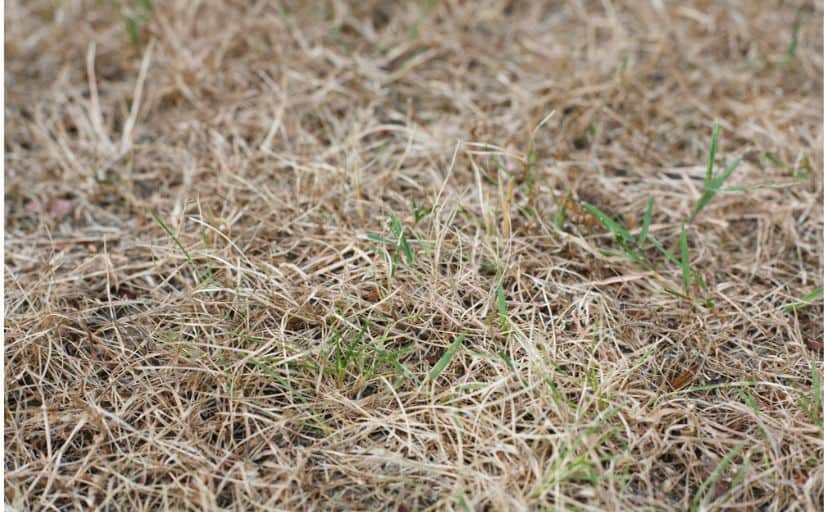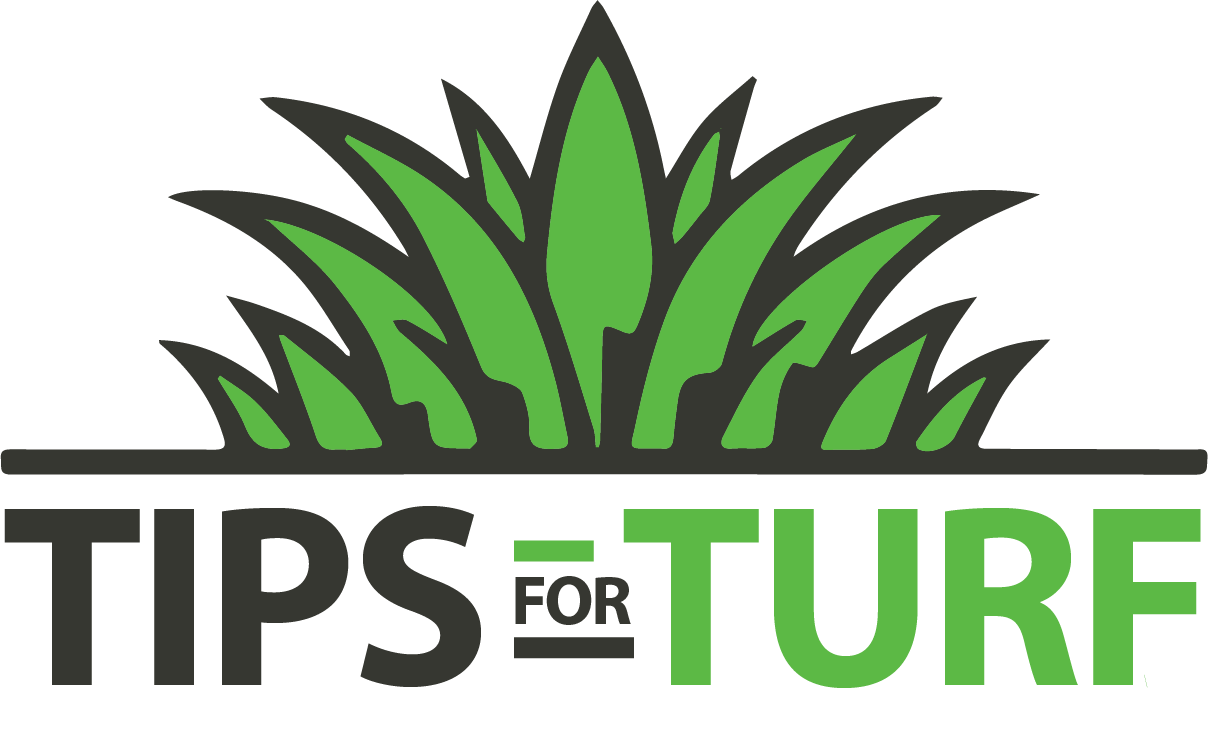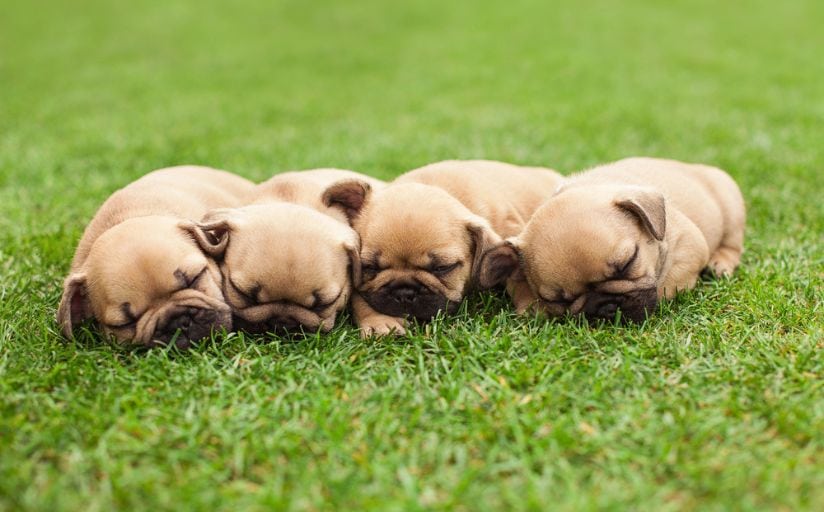Have you ever looked out at your lawn and wondered why it suddenly turned brown? If you’ve been doing everything you can to take care of your lawn and it turns brown, it’s probably because the grass has gone dormant. It’s not dead, though—it’s just conserving its energy until the next growing season. But when does grass go dormant, and how can you tell a dormant lawn from a dead one?
Here are the most commonly asked questions about dormant grass to help you keep your grass thriving.
(If you make a purchase using the links in this post, we may earn a commission.)
What Causes Grass To Go Dormant?
Whether it’s the cold of winter or a drought during the summer, grass has an internal stress mechanism that triggers dormancy when environmental conditions get tough. Temperature is the biggest factor, but drought can also cause dormancy because the grass can’t access enough water to continue growing.
When this happens, the grass shifts its focus to its roots to stay alive so it can grow again when conditions improve. The roots still absorb water and nutrients, just not as actively as when the grass is growing.
At What Temp Does Grass Go Dormant?
Cool-season grass goes dormant when soil temperatures dip below 50°F (10°C). Warm-season grass, however, starts slowing down when temperatures fall below 70°F (21°C), and it usually goes fully dormant by the time it hits 55°F (13°C). Interestingly, the soil temperature can lag behind the air temperature, so even if the air feels cold, the soil might still be warm enough to support some root activity.

What Are the Signs of Grass Dormancy?
Is your lawn dormant or in need of a little TLC? There are a few signs you can look for to see if your grass is dormant:
- Brown or Dull Appearance: When your grass turns brown, it’s likely dormant rather than dead.
- Slower Blade Growth: If you notice the grass isn’t growing as quickly between mowings, it’s probably dormant.
- Reduced Recovery: You’ll also see that grass takes longer to recover after heavy foot traffic. It might look flat or matted instead of springing back like it normally does.
- Dry and Patchy: Your dormant lawn may look dry and sparse, but the roots are still alive and will recover when temps warm up.
If you see these signs, you know your grass is just taking a break.
How Can You Tell if Grass Is Dead or Dormant?
If your grass is brown and crunchy, you might worry it’s dead. But it can still be dormant, and you can’t always tell the difference just by looking at it. Test it by walking outside, grabbing a small clump of grass, and pulling it lightly. If it comes out with no effort, it’s likely dead grass. If you feel resistance, the grass is probably dormant.
Next, look at the crown above the roots. If it’s pale with a hint of green, there’s still life in the grass. If the crown is brown, you’ll need to reseed, lay down sod, or think about getting synthetic grass.
Sometimes that crunchy texture comes from very dry conditions, so a deep watering may help if the grass is truly dormant. If the blades feel dry or brittle and break easily when you touch them, your grass is dead.
How Long Does Grass Stay Dormant?
Grass can stay dormant anywhere from a few weeks to several months, depending on your climate and the type of grass you have. Cool-season grasses usually go dormant when temperatures are extreme, either too hot in the summer or too cold in the winter. They’ll wake up when the weather returns to a range of 60-75°F (15-24°C). Warm-season grasses, like Bermuda and Zoysia, stay dormant through winter and reawaken in the spring when soil temperatures rise above 65°F (18°C).
On average, grass stays dormant anywhere from 1 to 3 months, but that can vary based on factors like how much rain you’re getting and the specific type of grass you have.
Can You Prevent Grass from Going Dormant?
You can’t stop your grass from going dormant, but you can minimize the stress that causes it. Deep watering during dry spells is a good idea to prevent drought-induced dormancy. For warm-season grasses, watering as temperatures start to drop may even delay dormancy a little.
Fertilizing your lawn can also keep it in good shape. But be careful not to overdo it—too much nitrogen can stress the grass, especially in harsh weather. If you’re not sure how much nitrogen to use, our lawn fertilizer calculator can be a big help.
How Should You Care for a Dormant Lawn?
Caring for a dormant lawn is all about understanding that even though the grass is not actively growing, it’s still alive. So, you need to adjust your care routine to protect the roots.
- Limit Traffic: The more foot traffic, the more stress on the grass. Try to avoid walking on your dormant grass too much, as it can compact the soil and harm the grass.
- Mow Sparingly: Mow sparingly, and only when absolutely necessary. Keep the blade high to protect your grass during dormancy (about three or four inches).
- Remove Debris: Clear away leaves and other debris to prevent mold or disease from forming.
- Fertilize Appropriately: Some people use dormant fertilization to give the roots a little extra boost. Just make sure you’re not pushing the grass to grow during a time it’s meant to rest. (So go light on the nitrogen.)
Taking these simple steps will help your grass bounce back when the growing season begins.

Does Dormant Grass Still Need Watering?
Dormant grass doesn’t need a lot of water, but it still requires occasional hydration. A light watering every 3-4 weeks will help prevent dehydration, but you should adjust this based on rainfall. Make sure not to overwater, though—dormant lawns won’t be able to absorb large amounts of water. A little moisture goes a long way.
And, of course, don’t water the lawn if you have freezing temps in your forecast. You’ll damage your lawn and do more harm than good.
What Is Dormant Fertilization?
Dormant fertilization is exactly what it sounds like—applying fertilizer while the grass is dormant to help support the roots. This keeps the grass healthy and nourished throughout its rest period so it can bounce back quickly when the weather warms up. In fact, lawns treated with a winterizing fertilizer in late fall often show up to 20% faster recovery when the growing season returns.
Here’s one of our favorite winter fertilizers:
BUY – Jonathan Green Winter Survival Fall Lawn Food
Knowing When Grass Goes Dormant Can Keep Your Lawn Healthy
Having dormant grass is a natural and beneficial process that helps your lawn survive extreme conditions. Knowing when your grass goes dormant—and how to care for it during this time—helps ensure your lawn stays healthy and vibrant year-round. Keep an eye out for signs like browning and slower growth, and adjust your lawn care routine accordingly. A little extra attention during dormancy can make all the difference when the growing season starts up again.

